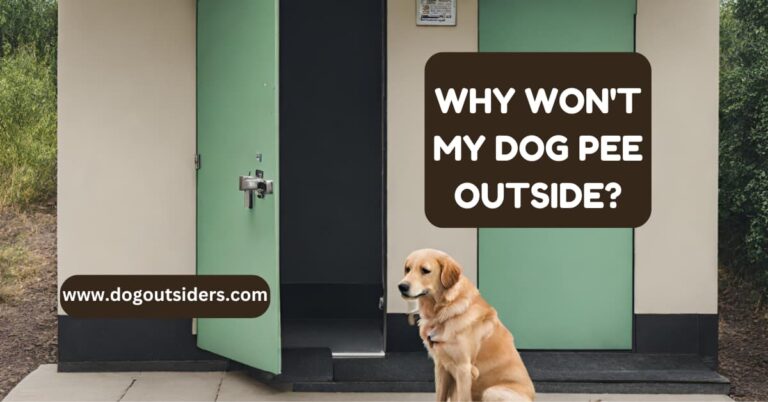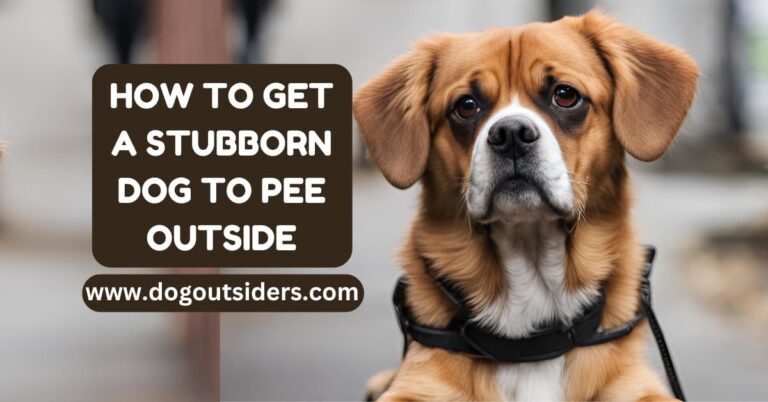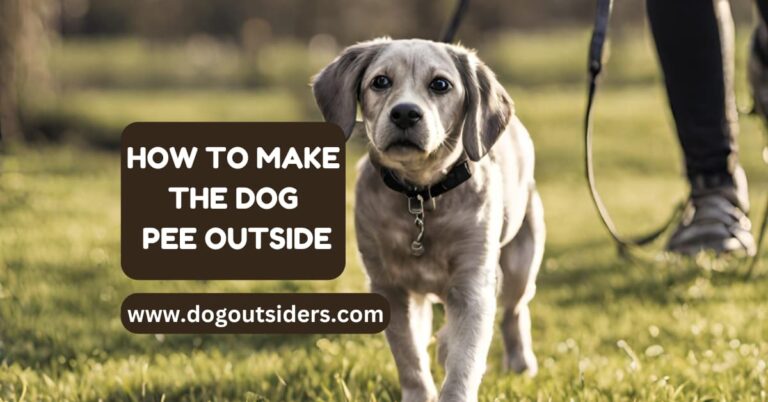Surprisingly, studies show that a staggering 75% of dog owners allow their furry companions to sleep outside at night. While this practice may seem common, it raises questions about the safety and well-being of our beloved pets, whether they are indoor or outdoor dogs. As a responsible pet owner, I understand the importance of providing a comfortable and secure environment for my dog, especially during nighttime hours. Join me as we explore this controversial topic, “can dogs sleep outside at night” and uncover the best practices for ensuring our canine friends’ restful sleep.
Key Takeaways
- Prepare Your Dog: Gradually acclimate your dog to sleeping outside by starting with short periods and gradually increasing the time to help them feel comfortable.
- Choose a Safe Spot: Select a sheltered area that is free from hazards, such as sharp objects or potential escape routes, to ensure your dog’s safety during the night.
- Bring Familiar Items: Incorporate your dog’s favourite toys, blankets, or bedding to provide a sense of security and comfort in their outdoor sleeping area.
- Train Consistently: Follow a step-by-step training guide to teach your dog to associate the outdoor sleeping area with positive experiences and relaxation.
- Establish a Routine: Create a nightly routine that includes feeding, exercise, and potty breaks before bedtime to help your dog settle down for the night.
- Prioritise Safety: Conduct nightly safety checks to ensure that your dog’s sleeping area is secure, comfortable, and suitable for all weather conditions.
Preparing Your Dog for Outdoor Nights

Assessing Needs
When considering if dogs can sleep outside at night, assess your dog’s breed and individual requirements. Some breeds are better suited to outdoor living, while others thrive indoors.
To determine if your dog can sleep outside, consider factors like coat thickness, size, age, and overall health. Each dog has unique needs that should be taken into account.
Acclimating Gradually
Start by acclimating your dog to outdoor sleeping gradually. Begin with short daytime sessions in a safe and secure environment. This helps your dog get used to the outdoor surroundings before transitioning to nighttime.
Providing positive reinforcement during these daytime sessions can help your dog associate outdoor sleeping with comfort and safety. Slowly increase the duration of outdoor stays to help your dog adjust.
Ensuring Comfort
Offer proper bedding and shelter to ensure your dog’s comfort and safety during outdoor nights. An orthopaedic dog bed can provide support and insulation against cold surfaces.
Adequate shelter, such as a dog kennel, protects your dog from the elements and provides a sense of security. Consider the climate in your area when choosing bedding and shelter options.
In my experience as a licensed dog trainer, I have found that consistent training and positive reinforcement are key when transitioning a dog to outdoor sleeping. By gradually introducing the outdoors and creating a comfortable environment, you can help your furry friend feel secure and content.
Choosing the Perfect Sleep Spot
Sheltered Area
Select a sheltered spot for your dog’s nighttime rest, ensuring protection from harsh weather conditions. This area should shield your furry friend from rain, wind, and extreme temperatures.
Invest in a comfy dog bed placed in a sheltered location to meet your pet’s sleeping needs. Opt for a bed that provides a luxurious fleece sleep surface for added comfort during the night.
High-Quality Dog Kennel
Consider investing in a high-quality dog kennel that offers insulation and security for your canine companion. A well-built kennel can provide a cosy and safe environment for your dog to enjoy a peaceful night’s sleep.
When setting up the kennel, ensure it is placed in a secure area where your dog feels safe and protected. The kennel should be spacious enough for your dog to move around comfortably while offering warmth and security.
Natural Elements
Incorporate natural elements like trees or canopies into your outdoor sleeping area to enhance your dog’s comfort. These elements can provide additional shade, protection, and a sense of security for your furry friend.
Adding a canopy above the sleeping area can help shield your dog from direct sunlight or light rain, creating a more pleasant sleeping environment. Trees can also offer a natural barrier against strong winds, making the spot more inviting for your pet.
Incorporating Familiar Comforts

Outdoor Toys and Blankets
Bring your dog’s favourite toys or blankets outside to create a sense of security and familiarity. This will help your furry friend feel more comfortable in the outdoor environment.
Providing an orthopaedic dog bed can offer added comfort and support during outdoor sleep. The cozy area with familiar scents and items will make your dog feel safe and relaxed.
Familiar Scents for Comfort
Ensure your dog has familiar scents around him to ease the transition to outdoor sleeping. Taking a special blanket or toy that carries your dog’s indoor scent can provide reassurance during the night.
Incorporating these familiar comforts can significantly improve your dog’s experience of sleeping outside at night. By creating a cosy and secure environment, you are helping your pet feel at ease and content.
Step-by-Step Training Guide
Introducing Outdoors
When introducing your dog to sleeping outside at night, start by allowing short periods during the day for them to get comfortable with the environment. Gradually increase the time spent outdoors to prevent any stress or anxiety.
Take your dog outside during the day and encourage exploration of the space to familiarize them with the surroundings. Provide positive reinforcement such as treats and praise when they exhibit calm behaviour outdoors.
Extending Outdoor Time
Gradually extend the outdoor sleeping periods by allowing your dog to spend more time outside each night. This gradual approach helps them adjust to the new routine comfortably without feeling overwhelmed.
Create a cosy outdoor sleeping area with familiar bedding and toys to make the transition smoother for your dog. Ensure that the area is secure and free from any potential hazards to promote a sense of safety and security.
Positive Reinforcement Techniques
Utilize positive reinforcement techniques such as rewards and praise to encourage your dog to sleep peacefully outside at night. Reward calm behaviour and provide verbal cues to associate nighttime outdoor sleeping with positive experiences.
Consistency is key when using positive reinforcement, so establish a bedtime routine that includes outdoor sleeping as a regular part of their nightly schedule. This will help reinforce the behaviour and create a sense of predictability for your dog.
Establishing a Nightly Routine
Regular Bedtime
Maintaining your dog’s regular bedtime routine is crucial for their well-being. Dogs love routine, and a consistent schedule provides them with a sense of security. Ensure your dog goes to bed at the same time every night.
Feeding your dog at the usual time before leaving him outside for the night helps regulate their digestion. Avoid feeding your dog right before bedtime to prevent discomfort or digestive issues during the night.
Access to Essentials
Ensuring your dog has access to water throughout the night is essential for their hydration. Dehydration can lead to various health issues, so make sure your dog has a fresh water source available at all times.
Providing a comfortable sleeping area for your dog outside is key to their restful sleep. Consider a cozy shelter with bedding to keep them warm and secure during the night.
In my experience, establishing a nightly routine for my dog has significantly improved his overall well-being. By sticking to a consistent bedtime schedule, he feels more settled and relaxed. Ensuring he has access to water and a comfortable sleeping area outside has made a noticeable difference in his quality of sleep.
Prioritising Safety and Comfort

Ensuring Secure Fencing
Regularly check your fence to guarantee it is secure and free from any weak points that could allow your dog to escape. A sturdy fence acts as the first line of defence, keeping your furry friend safe within the boundaries of your property.
Maintaining a strong and well-maintained fence not only provides protection but also gives your dog a sense of security, reducing the risk of them wandering off or encountering potential dangers. By securing the perimeter, you create a safe space for your dog to relax and sleep peacefully at night.
Protecting Against Unwanted Guests
In addition to ensuring a secure fence, it is essential to provide adequate protection from other animals or unwanted guests that may pose a threat to your dog’s safety. Implementing measures such as motion-activated lights or alarms can deter intruders and create a safer environment for your canine companion.
Creating a barrier against potential threats not only enhances your dog’s safety but also promotes a peaceful sleeping environment. By safeguarding your outdoor sleeping area, you offer your dog a comfortable space where they can rest undisturbed throughout the night.
Nightly Safety Checks
Regular Inspections
Regularly inspect your dog during the first few nights to ensure his comfort. Check for any signs of discomfort, such as restlessness or whining. Ensure that the sleeping area is suitable for nighttime conditions.
It is important to monitor your dog’s behaviour and well-being throughout the night. Look out for any signs of stress or anxiety, which could indicate that sleeping outside may not be suitable for your pet. Make necessary adjustments based on your observations.
Adjustments for Comfort
Make adjustments to the sleeping area based on your dog’s comfort and safety needs. Provide adequate bedding, shelter from harsh weather conditions, and ensure that the area is secure. Consider using a dog house or a covered kennel for added protection.
During the initial nights, observe how your dog reacts to sleeping outside. If your dog seems unsettled or anxious, consider bringing him indoors and gradually reintroducing him to outdoor sleeping. Remember that every dog is unique, so it’s essential to tailor the sleeping arrangements to suit your pet’s individual needs.
Personal Insights
I found that by placing a familiar blanket or toy in my dog’s sleeping area, he felt more at ease and settled quicker at night. Keeping a night light nearby helped alleviate any anxiety he had in the dark.
In my experience, providing a cozy shelter with proper ventilation and insulation made a significant difference in my dog’s comfort levels during chilly nights. It’s crucial to pay attention to your dog’s cues and make adjustments accordingly for a peaceful night’s sleep.
Patience and Persistence
Adjustment Period
During the adjustment period to outdoor sleeping, patience is crucial. Dogs may take time to get used to the new environment.
It’s essential to invest time in helping your dog feel comfortable outside at night. Provide a cozy, sheltered spot for them to rest.
Consider gradually transitioning your dog from indoor to outdoor sleeping. Start by spending short periods outside together before making it a full-time arrangement.
Overcoming Challenges
If your dog faces challenges initially, don’t give up. Persistence is key in helping them adjust to sleeping outside at night.
Reassure your dog with love and attention. Spend quality time with them outdoors to build trust and create a positive association with nighttime sleeping.
Ensure that your dog has access to fresh water and a comfortable bed or shelter to promote a sense of security.
Incorporate familiar scents, such as their favourite blanket or toy, into their outdoor sleeping area to provide comfort and familiarity.
Building Trust
Building trust with your dog is essential for a successful transition to outdoor sleeping. Consistency and routine play a significant role in helping them feel secure.
Establish a bedtime routine that includes a walk or playtime before settling down for the night. This can help your dog relax and unwind before bedtime.
Create a safe and secure outdoor sleeping area for your dog. Ensure that the space is free from potential hazards and provides adequate protection from the elements.
Weather Considerations
Monitoring Weather
Check the weather forecast regularly to ensure it is safe for your dog to sleep outdoors. Freezing weather can be dangerous for dogs, especially those not accustomed to cold temperatures. Keep an eye on the environment, looking out for signs of discomfort in your furry friend.
It’s essential to consider the impact of cold nights on your dog’s well-being. Thinking ahead and planning for any extreme weather conditions can prevent health issues. Remember, just like humans, dogs can suffer from hypothermia if exposed to very low temperatures for extended periods.
Indoor Alternatives
In case of inclement weather, bring your dog indoors to keep them warm and comfortable. Extreme temperatures can lead to frostbite and other health problems. Providing a cosy bed and a warm environment inside can ensure your pet stays safe during harsh weather conditions.
Consider setting up a designated area inside your home where your dog can sleep peacefully. This space should be free from drafts and adequately insulated to maintain a comfortable temperature. Offering blankets or a dog bed with extra padding can provide additional warmth during colder nights.
Protective Measures
When the weather turns unfavourable, consider alternative sleeping arrangements for your dog. This could include a sheltered outdoor space with proper insulation and protection from the elements. Ensure that the area is dry and shielded from wind and rain to keep your pet safe and comfortable.
Creating a cozy den-like space with blankets or straw can help retain heat and provide a sense of security for your dog. If your pet prefers sleeping outdoors, investing in a heated dog house or kennel pad can offer warmth during chilly nights. Remember, always prioritize your dog’s comfort and well-being when making decisions about sleeping arrangements.
Positive Reinforcement Methods
Rewarding Behaviour
Encourage good sleeping habits in your dog by rewarding him when he sleeps well in his kennel. This helps to reinforce positive behaviour and creates a positive association with sleeping outdoors at night.
Treats and Praise
Utilise treats and praise as tools to motivate your dog to enjoy sleeping outside. By offering rewards, you can help your furry friend associate outdoor sleeping with positivity and comfort.
I find that celebrating small victories is essential in the process of training your dog to sleep outside. For instance, when your dog spends a full night in his kennel without disturbance, acknowledging this achievement with praise or a treat can strengthen the desired behaviour.
Conclusion:
After following these steps, my furry friend is ready to snooze outside comfortably. Ensuring a safe and cosy spot, incorporating familiar items, and sticking to a routine are key. Regular safety checks and positive reinforcement make the transition smoother. Weather conditions must always be considered for my pup’s well-being.
Now that my dog is all set for outdoor nights, it’s time to enjoy peaceful evenings knowing they’re content. Remember, patience and persistence pay off in training. So, grab those blankets, set up the perfect spot, and let your furry companion embrace the night under the stars!
FAQ’s:
Yes, dogs can sleep outside at night with proper preparation and training. Start by gradually introducing them to the outdoor environment and providing a comfortable sleeping spot.
Select a sheltered area away from harsh weather conditions and potential dangers. Ensure the spot is comfortable, secure, and provides some familiarity for your dog.
Bring items like their bed, blanket, or favourite toys to create a sense of security and comfort. Familiar scents can also help them feel more at ease.
Follow a step-by-step training guide, gradually increasing the duration spent outdoors. Use positive reinforcement methods and establish a consistent nightly routine.
Ensure the sleeping area is safe from hazards, provide adequate shelter, check for any escape routes, and conduct nightly safety checks to maintain a secure environment for your dog.






